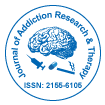Notre groupe organise plus de 3 000 séries de conférences Événements chaque année aux États-Unis, en Europe et en Europe. Asie avec le soutien de 1 000 autres Sociétés scientifiques et publie plus de 700 Open Access Revues qui contiennent plus de 50 000 personnalités éminentes, des scientifiques réputés en tant que membres du comité de rédaction.
Les revues en libre accès gagnent plus de lecteurs et de citations
700 revues et 15 000 000 de lecteurs Chaque revue attire plus de 25 000 lecteurs
Indexé dans
- Indice source CAS (CASSI)
- Index Copernic
- Google Scholar
- Sherpa Roméo
- Ouvrir la porte J
- JournalSeek de génamique
- Clés académiques
- JournalTOC
- SécuritéLit
- Infrastructure nationale du savoir de Chine (CNKI)
- Bibliothèque de revues électroniques
- Recherche de référence
- Université Hamdard
- EBSCO AZ
- OCLC-WorldCat
- Catalogue en ligne SWB
- Bibliothèque virtuelle de biologie (vifabio)
- Publons
- Fondation genevoise pour l'enseignement et la recherche médicale
- Euro Pub
- ICMJE
Liens utiles
Revues en libre accès
Partager cette page
Abstrait
Prevalence and Perceived Financial Costs of Marijuana versus Tobacco use among Urban Low-Income Pregnant Women
Jessica R Beatty, Dace S Svikis and Steven J Ondersma
Objective: To examine the relative prevalence of marijuana and tobacco use among low-income post-partum women, using self-report, urine, and hair testing data; and to further explore perceptions of the substances among postpartum women by evaluating perceived risk and monetary cost of prenatal marijuana versus tobacco use.
Methods: Data from two studies were available for a total of 100 (Study 1) and 50 (Study 2) low-income, primarily African-American post-partum women. Study 1 participants completed brief self-report measures of substance use as well as urine and hair samples; study 2 participants completed a brief opinion survey regarding the risks and monetary costs of prenatal marijuana use.
Results: In Study 1, the self-reported prevalence of any tobacco or marijuana use in the past three months was 17% and 11%, respectively. However, objectively-defined marijuana use was more prevalent than self-reported tobacco use: 14% tested positive for marijuana by urinalysis, and 28% by hair analysis. Study 2 participants were more likely to believe that there is a safe level of marijuana use during pregnancy, and nearly half believed that using marijuana during pregnancy was less expensive than smoking cigarettes.
Conclusion: Marijuana use may be as or more prevalent than tobacco use among low-income, African-American pregnant women. These findings may in part be attributable to perceptions of roughly equivalent cost and the lack of a clear public health message regarding prenatal marijuana use, combined with growing pro-marijuana advocacy. A broader public health response to address prenatal marijuana use, along with other substances of abuse, is needed.
Revues par sujet
- Agriculture et Aquaculture
- Biochimie
- Chimie
- Food & Nutrition
- Génétique et biologie moléculaire
- Géologie et sciences de la Terre
- Immunologie et microbiologie
- Ingénierie
- La science des matériaux
- Le physique
- Science générale
- Sciences cliniques
- Sciences environnementales
- Sciences médicales
- Sciences pharmaceutiques
- Sciences sociales et politiques
- Sciences vétérinaires
- Soins infirmiers et soins de santé
Revues cliniques et médicales
- Allaitement
- Anesthésiologie
- Biologie moléculaire
- Cardiologie
- Chirurgie
- Dentisterie
- Dermatologie
- Diabète et endocrinologie
- Gastro-entérologie
- Immunologie
- La génétique
- Maladies infectieuses
- Médecine
- Microbiologie
- Neurologie
- Oncologie
- Ophtalmologie
- Pédiatrie
- Recherche clinique
- Soins de santé
- Toxicologie

 English
English  Spanish
Spanish  Chinese
Chinese  Russian
Russian  German
German  Japanese
Japanese  Portuguese
Portuguese  Hindi
Hindi